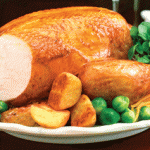As the saying goes, good shoes take you to good places. And that good place may be your personal best on the running track, beating your handicap on the golf course, or scoring that amazing goal on the pitch.

While the right shoe may not improve your basketball stats from Ryan Anderson to Kevin Durant, it may help you to up your personal game, whatever that game may be.
Cayman Health talked to Emelina Montoya of Camana Bay sportswear store Sportista, to get her top tips on choosing the right shoe for an active lifestyle.
Cayman Health: Are there shoes for specific sports and activities?
Emelina Montoya: Yes, there are several different types of shoes based on the activity or sport you play. The two most common shoes are running shoes and training shoes. Running shoes are for heel to toe movement in activities while training shoes are for side to side movements. Training shoes are best for weight, strength or agile training while running shoes support those learning to run as well as those training for a marathon.
CH: Do some brands cater better for certain activities?
EM: Each person is different. There are those who shop solely based on looks, those who are dedicated to a brand based on their personal performance, and those who are completely open to recommendations. We recommend certain brands to people depending on their use, arch and gait but a customer’s comfort is the ultimate factor.
CH: Is there a type of shoe that is good for those who undertake many different types of activities?
EM: There is! We’ve noticed an interesting trend in types of shoes that now provide multi-purpose support for the active person to wear all day, throughout multiple activities. A prime example of this is the New Balance Fresh Foam Arishi. It’s a versatile athletic shoe that works well for runs, workouts, and your everyday lifestyle. It’s stylish enough to go with a pair of jeans and a pair of running or workout shorts. Did we mention it also sells for an unbelievably reasonable price?
CH: What is your advice for people buying new athletic shoes?
EM: Try before you buy. While it’s always tempting to buy online, our key advice for buying new athletic shoes is to try them out first. Different brands fit differently and it’s important to try the shoes in similar conditions you would use them in. For example, try them out with the same or similar socks, go for a quick jog or do some burpees; the more you try the shoes out, the better chance you get to see if they work for your purpose.
CH: How does the staff of the shoe store help with choosing the right shoe?
EM: Engaging with the customer to find out exactly what type of shoe they’re looking for is crucial. Using this information, we train staff to narrow down the customer’s choices and encourage the customer to try different brands. If time permits, we offer our treadmill in store for two reasons:
1) to allow a customer to try out their shoes
2) to aid people in the two-step process of our shoe-selection process. This two-step process consists of first analysing a person’s arch via a heat-sensor plate and secondly by videoing their gait on a treadmill.
CH: Is there a best way to lace athletic shoes?
EM: Shoelaces are a small yet intrinsic part of wearing athletic shoes. We may all know how to tie our shoes but for optimal performance we would recommend Lock Laces, also called run or triathlete laces. These ‘laces’ provide a zip-tie type lock which keeps laces secure and tight so you can concentrate on your activity without worry.
CH: How often should people replace their athletic shoes?
EM: An athletic shoe’s lifespan depends on how often they’re used. While we wouldn’t put an exact timeframe on when to replace them, there are several red flags to look out for. If the bottom of your shoe appears worn down and your shoe is not providing the same support/cushion as when you first bought it, it might be time for a new pair. Your activity, length of time using them and body weight all contribute to lessening the cushion of your shoe. After time, depending on these factors, the shoe stops absorbing shock as much as it is supposed to and your foot will have less protection when coming into contact with the ground. Always be vigilant of any physical changes in your shoe as well as your comfort and be aware of the length of time you’ve had the shoes for.
CH: Is there anything else you think people should know about athletic shoes?
EM: A good shoe is key to having a good time while being active. With the right support, fit, and style, confidence is second nature to even those just starting out.








